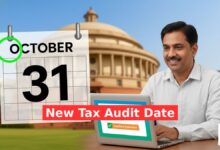Income Tax Return 2025: How Many Times Can You Switch Tax Regimes? Know The Details

As the time for filing Income Tax Returns (ITR) approaches, a crucial decision for taxpayers is choosing the right tax regime. Since Financial Year 2023-24 (Assessment Year 2024-25), the new tax regime has been set as the default option. However, eligible taxpayers can still opt for the old tax regime. The pressing question for many is: how many times can you actually switch between these regimes? There’s considerable confusion surrounding this. Let’s delve into the details.
Who Can Switch Tax Regimes and How Often?
The rules for switching tax regimes primarily depend on the taxpayer’s source of income:
1. Salaried Individuals (With No Business Income):
- If you do not have any income from a business or profession, meaning you are primarily a salaried employee, the rules are quite flexible for you.
- You can choose between the old and new tax regimes each financial year based on what is more beneficial for you.
- There’s no need to file any separate form for this. You can select your preferred regime while filing your income tax return.
- Notably, for FY 2024-25 (AY 2025-26), under the new tax regime, income up to ₹7 lakh is exempt from tax. Additionally, a standard deduction of ₹50,000 has been introduced in the new tax regime, effectively making income up to ₹7.5 lakh tax-free for those who can claim it.
2. Individuals with Income from Business or Profession:
For those who have income from a business or profession, the rules are different and relatively more restrictive:
- A One-Time Option to Return: If an individual with business or professional income opts out of the new tax regime (which is the default) and chooses the old tax regime, they get only one opportunity in their lifetime to switch back to the new tax regime.
- Final Decision: Once they switch back to the new regime, they cannot revert to the old tax regime again. This change is considered final.
- Form 10-IEA: Taxpayers with business income who wish to opt out of the new tax regime (i.e., choose the old regime) must file Form 10-IEA on or before the due date for filing their ITR. Similarly, this form is also applicable if they decide to switch back from the old regime to the new regime.
Important Considerations:
- Default Regime: Remember, the new tax regime is now the default. If you do not make an explicit choice, you will be taxed under the new regime.
- Thorough Calculation: Before settling on a tax regime, it’s wise to meticulously calculate your potential tax liability under both systems. You can use various online tax calculators for assistance.
- Future Planning: Especially for those with business income, choosing a tax regime should be done with long-term financial planning in mind, as the flexibility to switch is limited.
Making the right decision at the right time can lead to significant tax savings. Therefore, ensure you understand these rules thoroughly before filing your income tax return.

